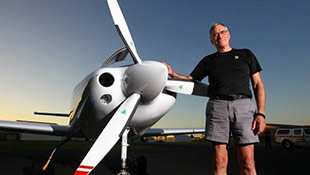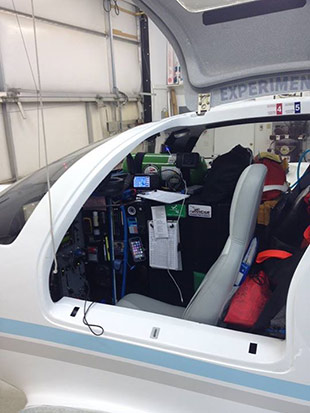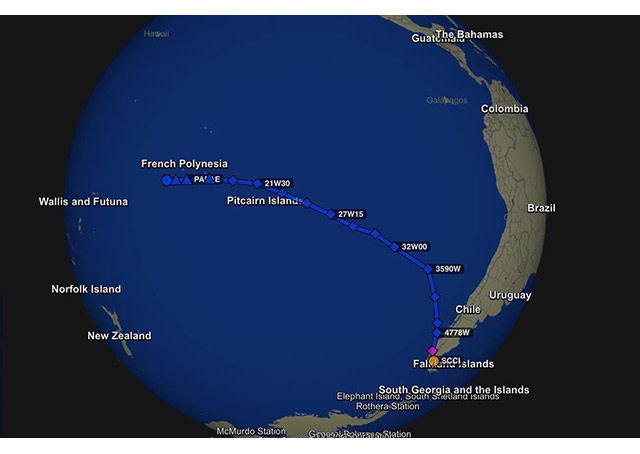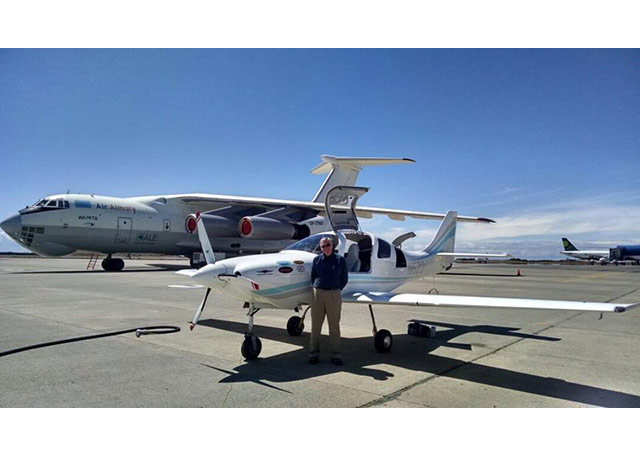Around the world, over the poles
Bill Harrelson ‘shatters’ speed record, his team says
A pilot from Fredericksburg, Virginia, has flown around the world in a single-engine airplane on a route down the eastern side of the Americas, over the South Pole, across the Pacific Ocean, up the West Coast of the U.S. to Alaska, over the North Pole, and home.
Followers tagged along on social media and an online flight tracker as Bill Harrelson, 68, completed his journey with a landing back where he started in Kinston, North Carolina, the afternoon of Jan. 21. The final leg capped a 24-day adventure that will allow him to claim a speed record that his team said "shatters" a 1987 mark set by Richard D. Norton.
"We have all had a bird’s-eye view of a professional performing at the peak of his career," said Harrelson’s ground team in the journey’s concluding Facebook post. The team promised to publish more information to augment detailed flight reports and photographs previously posted, "after Bill organizes his notes."
Harrelson, already a long-distance record holder who had attempted the over-the-poles flight in 2013, flew a modified Lancair IV single-engine airplane capable of carrying 361 gallons of fuel in nine tanks.

As the team expected, the new attempt faced its most critical test on its third leg in late December. Strong headwinds foiled Harrelson’s plan to fly from an airport in southern Chile, over the South Pole, and on to a planned stop in Hamilton, New Zealand. Harrelson reached the South Pole, but was forced to retreat to the departure point in Punta Arenas, Chile, and ponder other routes.
Having logged the South Pole, six days later he departed again, flying nonstop from Chile to Tahiti, then to Auckland, New Zealand, and finally reaching Hamilton—a "declared" or mandatory landing point under rules the team opted to follow for the record bid.
Although much flying remained, the team—which had predicted that all would rest on Leg 3—allowed itself some momentary celebration. A posted photo showed a smiling Harrelson posing in shorts and a T-shirt in summery southern hemisphere weather with the Lancair. "Go Bill," the team wrote.
'Polaris is straight up'
On Jan. 12, Harrelson flew from New Zealand to Hawaii, a 3,825-nautical-mile, 21-hour, seven-minute leg. Then it was on to San Luis Obispo, California, for the run up the West Coast—a tactical decision made to avoid an airframe icing threat "with no escape" posed by a more northerly passage from Hawaii to the mainland.

Harrelson made his run at the North Pole from Fairbanks, Alaska, on Jan. 20.
"Southbound and heading for home. Bill is on top of the world. Polaris is straight up," the team announced at 10:43 p.m., noting his arrival above the point on Earth where Polaris, the star most closely aligned with the North Pole, remains fixed in the sky directly overhead as the earth rotates around its axis.
Southbound and headed for home on Jan. 21, Harrelson was flying at 18,000 feet in a cockpit where temperatures had sometimes plummeted to the single digits on the long night of polar flying, said ground support team member Glenn Oxford in a telephone interview with AOPA.
Temperatures monitored in the Lancair were "rising with the sun," Oxford said, and Harrelson had a shot at landing in Kinston by 4 p.m., "shattering" the existing record for the flight. However Harrelson and his team were still keeping their eyes on stormy weather and icing prospects in the mid-Atlantic states.
Weather proved no obstacle, and Harrelson landed in Kinston around 3:55 p.m., completing a flight his team described as “the perfect blend of patience and aggressiveness, stamina and experience.”
‘Not even close’
As for establishing a new record, it wasn’t even close—nor would it have been, Oxford said, “even if he shows up next week.”
According to the Fédération Aéronautique Internationale’s records data, Norton established the record for "speed around the world over both the Earth's poles - 1: internal combustion engine" on June 15, 1987, flying a Piper PA-46 Malibu. The 14.04 km/h average speed recorded for the flight—the mark Harrelson had to beat—takes into account all the elapsed time from the first takeoff to the final landing, in a calculation based on the complete distance flown.
“That means the clock is always running whether Bill is flying or not,” Harrelson’s team explained to its followers.
The Harrelson team estimates that he averaged about 60 km/h, Oxford said, noting that Harrelson completed his effort in less than a month; Norton, a former Trans World Airlines pilot from Pennsylvania who died in 1998, had taken more than four months to complete his 1987 effort.












